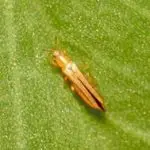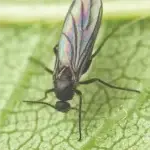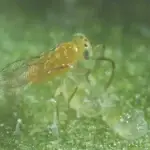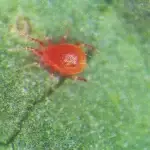Tomatoes
Overview
Tomatoes are grown widely across Australia, traditionally outdoors but increasingly in high-tech greenhouses.
The main pests that affect greenhouse tomatoes are Greenhouse Whitefly (Trialeurodes vaporariorum) and Silverleaf Whitely (Bemisia tabaci).
Tomato Russet Mite, caterpillars and thrips are secondary pests of greenhouse tomatoes.
While aphids can occasionally flare up at hotspots, it is not a common pest.
Signs you have Tomatoes pests
The key to controlling pests in your tomatoes effectively is detecting them early and introducing beneficials at the right moment.
- Whitefly. Honeydew and sooty mould on the leaves and fruit indicate the presence of whitefly hotspots in your crop. You can easily detect whitefly by disturbing the heads or leaves of the tomato plants, especially along the perimeter, corners and near entrances of your greenhouse.
- Two-Spotted Mite. You will notice small white or yellow spots on the leaves that will increase in number, and webbing at localised hotspots which will spread quickly to nearby plants. This pest can cause significant damage in tomato crops where Nesidiocoris is not used.
- Thrips. These cause direct feeding damage to the foliage and scar your fruit when active at high numbers. Western Flower Thrips can transmit the Tomato Spotted Wilt Virus to your tomato crop.
- Tomato Russet Mite. Bronzing of stems and foliage and even the fruit when this pest is active at high levels. Affected stems can crack and eventually break.
Products you can use to control Tomatoes pests
While good control of Greenhouse Whitefly has been achieved worldwide since the 1920s with Encarsia Formosa (Encarsia), its effectiveness as a standalone control has declined in modern times. This is because many of today’s growers practice heavy leaf removal to increase production, which limits the Encarsia lifecycle. Our greenhouse tomato IPM program incorporates Eretmocerus warrae (Eretmocerus), a native whitefly parasite we rear for its strong flight, ability to withstand higher temperatures, and better tolerance to some pesticides than Encarsia.
We also supply the parasitic wasp Eretmocerus hayati which is a very effective countermeasure for Silverleaf Whitefly.
In 2012 we collected the predatory mirid Nesidiocoris tenuis (Nesidiocoris) from an outdoor tomato crop in Victoria. Overseas, this predator is widely used in the southern Mediterranean districts to control Tuta absoluta (Exotic Tomato Leafminer) and whiteflies. Nesidiocoris has been present in Australia for many years and feeds on whiteflies, spider mites, thrips, moth eggs and small caterpillars. A drawback is that Nesidiocoris also feed on plant tissue.
You can use sticky traps and rolls to support your IPM program. These will help you monitor and mass-trap thrips, Fungus Gnat and whitefly adults.
Other tips for managing pests in your Tomatoes
Nesidiocoris plays a vital part in our greenhouse tomato IPM programs because it controls several pests, including thrips, whiteflies, and moth eggs.
If Nesidiocoris reaches high levels and insect prey is scarce, it can cause some superficial damage, especially in hot conditions, as it obtains some of its moisture needs from the plant. Some tomato varieties are more sensitive to Nesidiocoris damage than others.
If you need to reduce the population of Nesidiocoris, a Biological Services Consultant can help you reduce their numbers without killing them all. If you need to eliminate them, they are very sensitive to most broad-spectrum insecticides.
Your local Biological Services consultant can provide year-round, professional crop monitoring and expert IPM program advice.
Get tailored advice for your commercial crop
To speak with one of our qualified consultants about your current commercial crop challenge or to learn about the benefits of the IPM maintenance and monitoring services we provide, contact us.

















